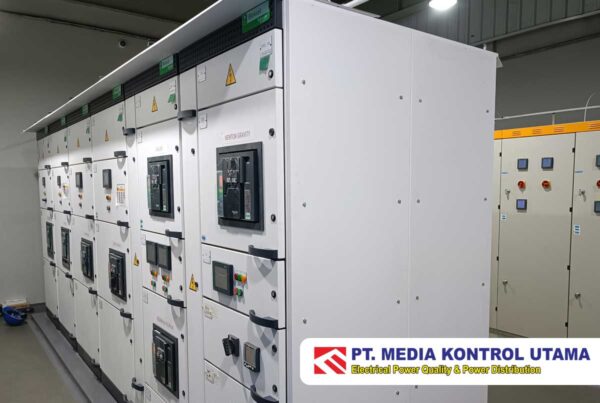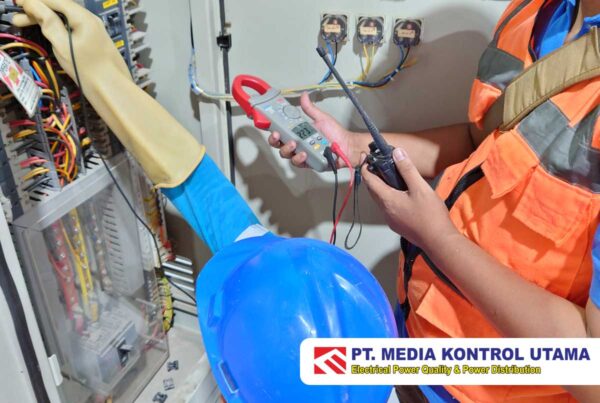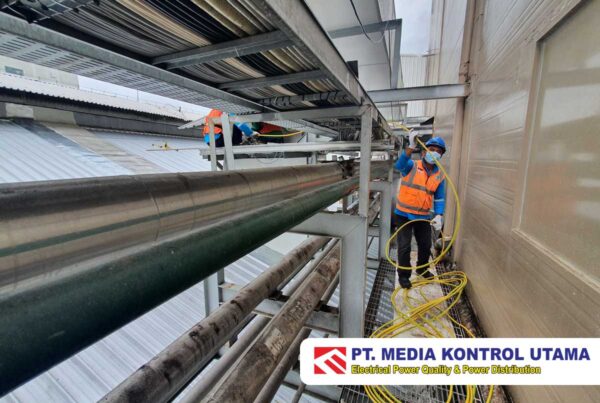Electrical hazards are objects or situations that pose a risk of injury due to direct or indirect contact with electrical devices.
It’s true that electricity can be dangerous, but if managed properly, these risks can be prevented or minimized. However, when something goes wrong, the severity of electrical hazards can be fatal and life-threatening.
Dear colleagues, be aware that electrical hazards can lead to death or injury due to:
- Electrical shocks
- Electric burns
- Electrical explosions or arc flashes
- Fires or explosions triggered by electrical energy (where deaths or injuries are linked to generation, transmission, transformation, rectification, conversion, conduction, distribution, control, storage, measurement, or use of electrical energy).
Accidents can happen at any time, and workplace electrical regulations (K3) apply to all work activities, especially in electrical systems where hazards are always present.
Therefore, electrical hazards need careful attention, particularly from electrical engineers. This also applies to mechanical engineers, construction workers, production staff, and office employees, as their work activities may expose them to electrical hazards.
Examples of Electrical Hazards:
- Electric shocks and burns from direct contact with wires
- Fires from damaged cables
- Overloaded circuits
- Exposed electrical components
- Electric shocks or burns due to lack of personal protective equipment (PPE)
- Explosions and fires from flammable and explosive materials
- Contact with overhead power lines
- Electrical exposure to water
You might wonder, if electricity is so dangerous, why are there so few fatalities?
Good question! There are certainly unreported electrical incidents. Many people share near-miss experiences when working with electricity. The two main electrical hazards are electrical shocks and arc flashes.
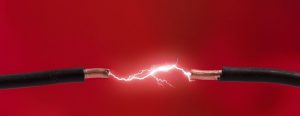
Illustration of Arc Flash – Google Images
In some cases, the cause of electrical accidents is not clearly explained (e.g., where did the electricity come from? Was the wire exposed? Was there electrical exposure to water?), or unknown electrical energy. These are serious issues that need to be identified, prevented, and corrected.
So, how do we keep ourselves and others safe?
The answer is: Safe systems, people, and places! A Safe System means having a safe working system where everyone has specific responsibilities related to electrical safety.
Similarly, a Safe Place starts with a properly designed electrical system. Regulation 4(1) of the Electrical Safety Regulations specifically requires that “all systems must be constructed to prevent electrical hazards.”
Essentially, the electrical system must be built correctly according to the design provided by a competent professional who designs safe working systems. The system must be operated correctly to avoid electrical hazards.
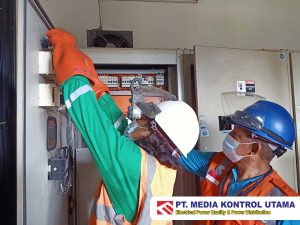
Using Electrical Safety Gloves – PT Media Kontrol Utama
Alright! To wrap up:
Here are some important points to remember:
- Ensure workers know how to use electrical equipment safely.
- Make sure there are enough sockets available. (Check for overloaded sockets by avoiding the use of multiple adapters, which can cause fires.)
- Ensure no cables are left lying around that could cause tripping or falling.
- Turn off and unplug equipment before cleaning or adjusting it.
- Make sure everyone checks for electrical cables or equipment in their work area and looks for warning signs of electrical hazards or other dangers. Check around the workspace, and remember that electrical cables might be inside walls, floors, and ceilings (especially when drilling in these areas).
- Ensure anyone working with electricity has the necessary skills, knowledge, and experience. Incorrectly wiring a plug can be dangerous and cause fatal accidents or fires.
- Immediately stop using equipment if it appears damaged – have it inspected by a qualified person.
- Ensure any electrical equipment brought to the workplace by employees or rented or borrowed is suitable for use before using it and is maintained as necessary.
- Consider using Residual Current Devices (RCDs) between the power supply and equipment, especially when working outdoors or in wet or confined spaces (refer to HSE electrical safety guidelines for the workplace).
That’s our discussion on Electrical Hazards. Be cautious while working and prioritize safety!
Remember, your family is waiting for you at home. 👋👷
Contact Us
For expert consultation and repair services for your need, reach out to PT Media Kontrol Utama. Our experienced professionals are ready to help you maintain the reliability and safety of your electrical distribution system.
Reference :
- Original Source – PT Media Kontrol Utama, “Electrical Hazard”, 2022.
- Schneider Electric, “Electrical Safety Basic Training for Non-Electricians”, https://youtu.be/ggJo6m8NZtA

